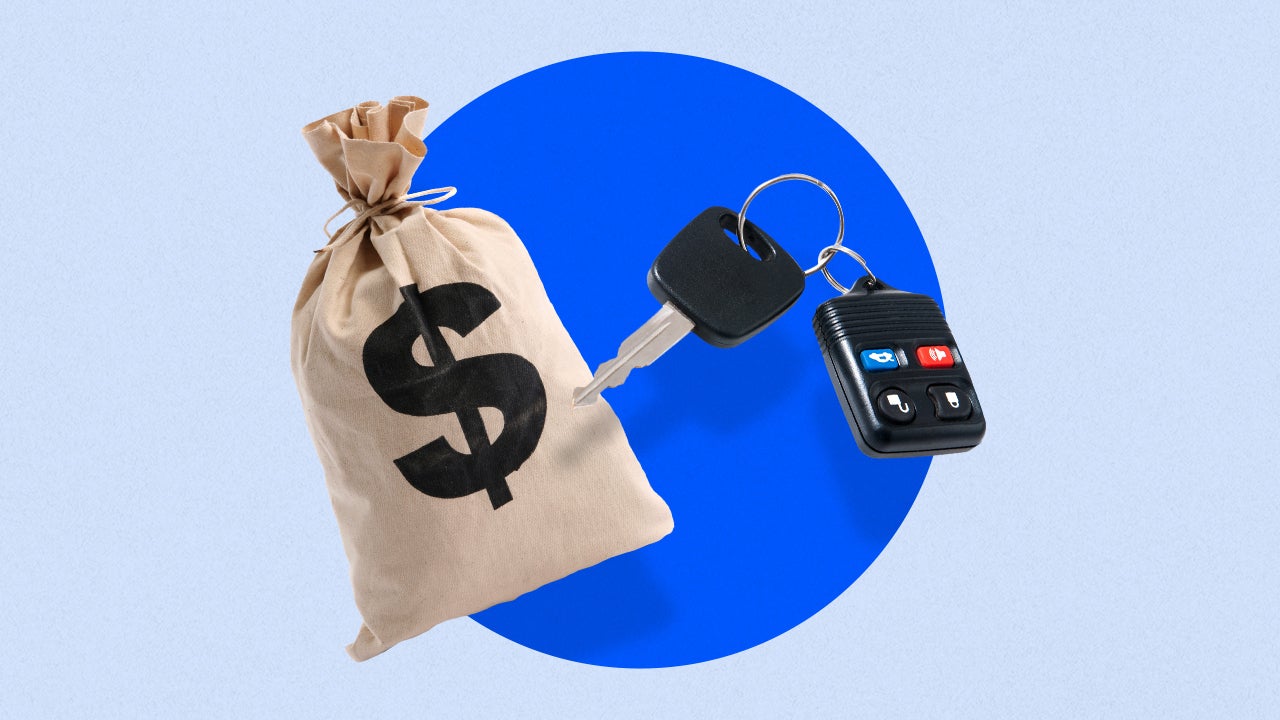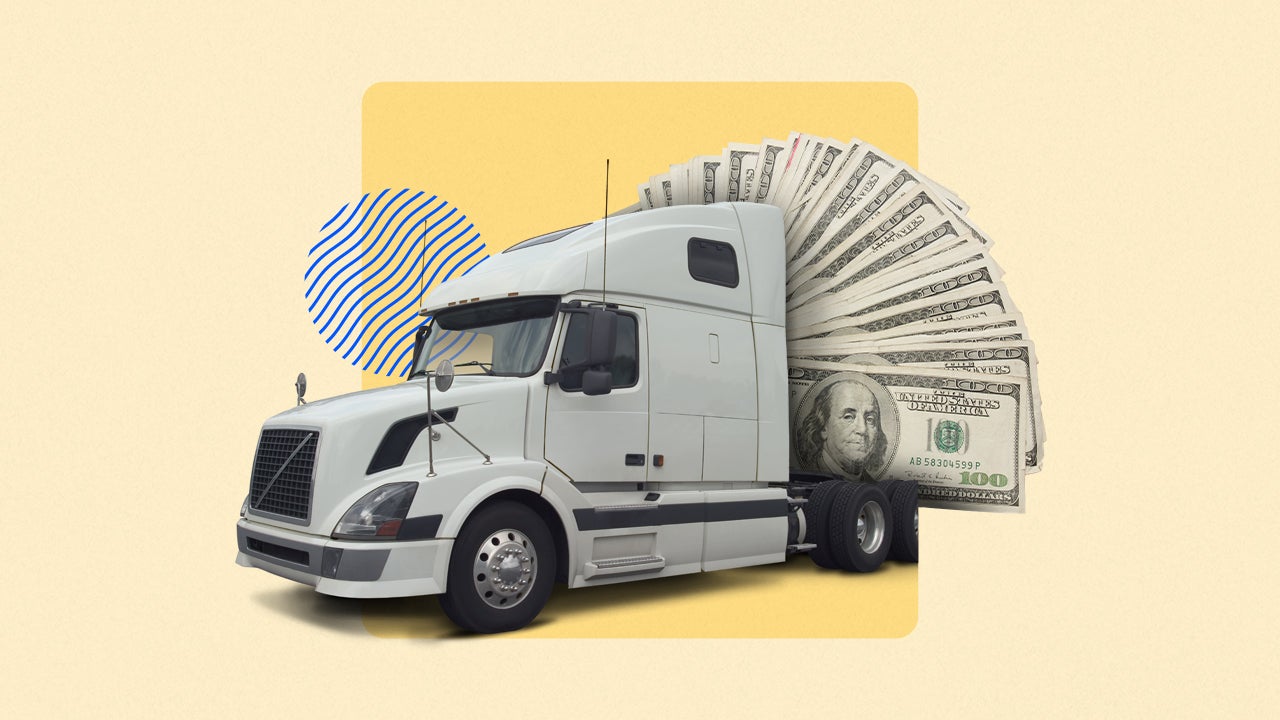Types of semi-truck financing

Key takeaways
- There are a variety of different loan options available to businesses looking to purchase a semi-truck, including term loans, equipment lines of credit and SBA loans
- Online lenders offer fast applications and funding, but may have higher rates and fees than banks and credit unions
- SBA loans may offer the most affordable loans for startups and businesses with bad credit but can take up to 90 days to receive funding
Semi trucks are a key piece of equipment in a wide variety of industries. They are one of the most cost-effective ways to get goods and materials from point A to point B. But they can also be expensive, so many businesses rely on financing to purchase them.
To find the most affordable option for your business, here’s a look at the types of semi-truck loans available and their advantages and disadvantages.
Equipment loans
An equipment loan is a special type of term loan designed specifically for buying equipment and machinery, such as a semi-truck. Equipment loans use the equipment you buy as collateral to secure the loan.
Since equipment loans are secured, lenders are often willing to lend higher amounts. A business could borrow $100,000 or more to cover the cost of a semi truck. Well-qualified borrowers may also see rates as low as 6 percent, while businesses with poor credit might pay 30 percent or more.
Equipment lines of credit
An equipment line of credit is a type of loan that is designed to help companies buy equipment. Unlike term loans, lines of credit give you access to a pool of cash you can draw from multiple times on an as-needed basis. You can keep drawing from the line of credit until you hit the credit limit, and you only pay interest on the outstanding balance of the line of credit.
Interest rates for lines of credit tend to be higher than term loans. Loan amounts may also be lower. These factors could impact the type of truck you want to buy.
SBA loans
SBA loans are business loans insured by the U.S. Small Business Administration. This insurance helps protect lenders from losses when borrowers default, which means lenders can offer easier approvals and much larger loans, upwards of $5 million.
There are a few different SBA loan programs that you can use to buy a semi truck.
| SBA loan program | Loan amount | Details |
|---|---|---|
| Standard 7(a) loan | Up to $5 million |
|
| SBA Express | Up to $500,000 |
|
| CAPLines | Up to $5 million |
|
Common uses for semi-truck financing
If you’re in an industry that requires a semi truck, a reliable vehicle is essential. As semi trucks are an expensive asset, financing is appealing to many businesses.
Some common uses for semi-truck financing include:
- Purchasing a new or used truck with the potential to avoid a down payment through 100% financing
- Assistance with repairs or updates
- Engine overhauling
Alternatives to semi-truck financing
While there are benefits to obtaining a semi-truck loan, this type of financing won’t be right for every business. The good news is there are alternatives to semi-truck financing. Here are some of the most common alternatives:
- Equipment leasing. Instead of purchasing equipment upfront, you can lease a semi truck. There are two types of leases: operating and capital. An operating lease allows you to rent the truck and then return it, while a capital lease gives you the option of purchasing the truck when the lease ends.
- Business line of credit. A business line of credit is typically revolving, meaning your credit line replenishes as you pay back what you’ve spent. You can typically use a line of credit for any business expenses, but they often have lower credit limits than other types of business loans.
- Term loans. With a term loan, you get a lump sum of cash upfront and pay it back through a series of regular payments. Term loans can be secured or unsecured and used for almost any business need. Repayment terms for term loans will vary, often ranging from a few months to five years or more.
Bottom line
Semi trucks are an expensive investment but a key tool for many businesses in many industries. Whether you need to buy a truck to help move your company’s goods around or want to get into the industry as a truck operator, financing can help you achieve your goals. There are even equipment loans for businesses in their startup phase or business owners with credit scores of 500 and above. But before you sign on the dotted line, make sure to shop around and compare offers from multiple lenders to get the best deal.
Frequently asked questions
-
Semi-truck financing can have interest rates that range from 5 percent to 30 percent or more, but the right interest rate for you will depend on factors like your credit score, time in business and annual revenue. Established businesses with good credit and a track record of strong revenue will qualify for the best rates. If you are a new business or you have bad credit, you will likely see loans with interest rates of 15 percent to 30 percent or higher.
-
Banks and credit unions tend to look for borrowers with strong credit scores of 670 and above. Online lenders have more relaxed requirements. It’s possible to find a lender willing to work with borrowers with scores of 500 and above.
-
The average semi truck has a lifespan of about 750,000 miles. But this can vary with the type of truck, its components, where it operates, and the maintenance it receives. Well-maintained trucks can last for 1 million miles or more. Poorly maintained ones operating in harsh conditions can die much sooner. The typical truck drives about 45,000 miles per year, meaning a truck can last for more than 15 years.
You may also like

What to do before applying for a car loan

What are the most common types of car loans?

How to get semi-truck financing



